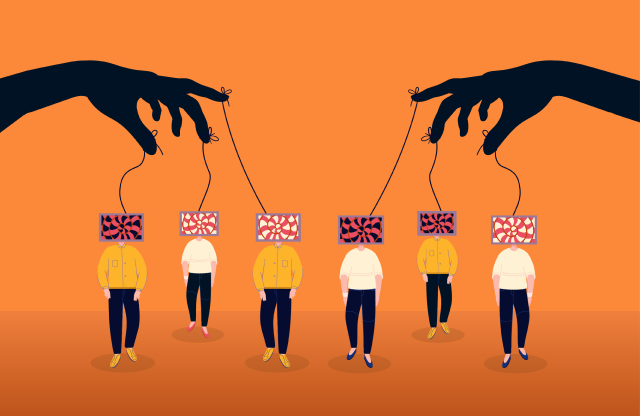The Information War: A New Front Line in Global Conflict, with Asia Watching Closely
The ongoing conflict in Ukraine, sparked by Russia’s full-scale invasion in February 2022, has tragically become the largest European war since World War II. Beyond the devastating physical battles fought with conventional weaponry, a parallel war is raging – a war of information, narratives, and perceptions. This invisible conflict, characterized by rampant propaganda, disinformation, and sophisticated media manipulation, is being waged not only between Kyiv and Moscow but also across the globe, with major powers like the US and China deeply involved. The conflict serves as a stark warning for Asia, a region grappling with its own geopolitical tensions, particularly concerning Taiwan, the South China Sea, and the Korean Peninsula. The lessons from Ukraine underscore the urgent need for Asian nations to understand and counter the destabilizing potential of disinformation.
Propaganda, a tool long used to shape public opinion and legitimize aggression, has been supercharged in the digital age. Russia’s state-controlled media outlets, such as RT and Sputnik, have become sophisticated instruments of narrative control, disseminating carefully crafted messages that portray Russia’s actions as defensive and Ukraine as a Western puppet. Simultaneously, Western media outlets frame the conflict as an unprovoked invasion of a sovereign nation, a narrative amplified by NATO, the EU, and human rights organizations. This clash of narratives creates a fragmented information landscape where different audiences consume drastically different versions of the same events, fostering polarized realities and hindering any shared understanding of the truth.
The proliferation of misinformation and disinformation has been identified by the World Economic Forum as a critical threat to global stability. In conflict zones like Ukraine, this threat is amplified. False narratives, manipulated media, and the use of deepfakes blur the line between fact and fiction, eroding public trust in journalism, government institutions, and even democratic processes. This erosion of trust is not confined to Ukraine. Across Asia, from India to the Philippines, governments have been both targets and perpetrators of disinformation campaigns, often aimed at polarizing societies, influencing elections, and undermining political opponents. Taiwan, in particular, faces a relentless barrage of digital propaganda from China designed to sow discord and question the legitimacy of its democratic system.
The way media frames events plays a crucial role in shaping public perception. The 2022 missile strike on a shopping mall in Kremenchuk, Ukraine, provides a stark example. Western media portrayed it as a deliberate Russian attack on civilians, while Russian outlets claimed the target was a military facility, accusing the West of exaggerating the incident. This illustrates how the same event can be presented through radically different lenses, creating conflicting “truths” for different audiences. Propaganda not only manipulates facts but also manufactures a false sense of consensus. Russia’s annexation of Crimea in 2014 saw state media claiming overwhelming public support for the move, despite credible reports of coercion and a lack of international observers. This tactic of presenting manufactured unity as fact aims to suppress dissent and create an illusion of popular support for controversial actions. Similar tactics have been employed across Asia, from China’s narrative surrounding the Hong Kong protests to India’s portrayal of the Kashmir conflict, highlighting the pervasive use of media control to shape public opinion and silence dissenting voices.
One of the most dangerous outcomes of information warfare is the creation of parallel realities. Within Russia, the invasion of Ukraine is largely perceived as a necessary "special military operation" to protect ethnic Russians and counter NATO expansion. Conversely, in the West, it is viewed as a flagrant violation of international law. This stark divergence in perception makes meaningful diplomatic dialogue extremely challenging. When populations are exposed to mutually exclusive narratives, compromise becomes politically untenable, perceived as a sign of weakness rather than a path towards resolution. This pattern is evident in Asia as well, particularly in the strained relations between China and Taiwan, and in domestic debates over foreign policy in countries like Japan and South Korea.
Despite the relentless propaganda efforts from Russia and its allies, Ukrainian public opinion has remained remarkably resilient, with strong support for Western alignment and NATO membership. However, the prolonged conflict is taking its toll, and war fatigue is becoming increasingly evident. This underscores the psychological impact of protracted warfare, a vulnerability that authoritarian regimes often exploit through intensified information manipulation. The Russia-Ukraine conflict offers a chilling preview of the potential consequences of unchecked disinformation, not only for nations directly involved in conflict but also for the international system as a whole. For Asia, the implications are undeniable: if disinformation continues to spread unchecked, it will further erode public trust, undermine democratic institutions, and exacerbate existing regional tensions.
The Indo-Pacific region is already a battleground for competing narratives. China’s expanding media influence, North Korea’s sophisticated cyber propaganda operations, and the rise of domestic disinformation campaigns across Southeast Asia paint a concerning picture of a future where digital influence operations become the standard practice in international relations. To counter this emerging threat, Asian nations must prioritize investments in media literacy programs, bolster cybersecurity defenses, and foster stronger cross-border collaboration to combat disinformation effectively. Failure to do so risks escalating tensions and transforming the region into the next front line in the global information war.
The conflict in Ukraine is not merely reshaping the geopolitical landscape of Eastern Europe; it is fundamentally changing how wars are fought and how they are perceived. The greatest danger may not be that people believe lies, but that they lose faith in the very concept of truth, as historian Yuval Noah Harari has warned. For Asia, the stakes are incredibly high. As information itself becomes weaponized, the region must act decisively to protect truth, transparency, and trust before reality itself becomes another casualty of war.


